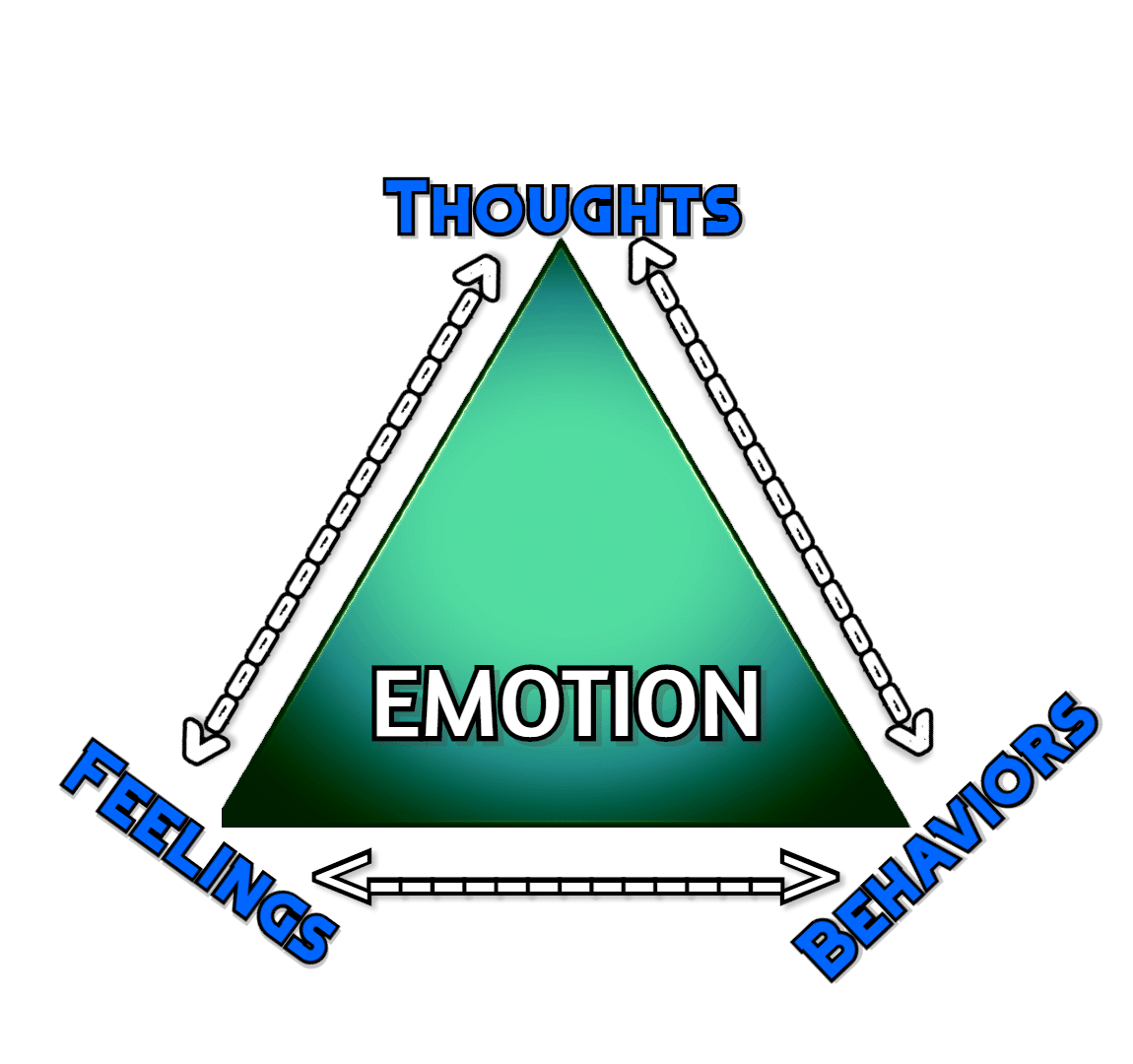For Your Edification Series #1: Therapy Concepts
Chapter 1: The Cognitive Triangle
The Cognitive Triangle pictured right is a foundational component of a therapy called Cognitive Behavioral Therapy or “CBT” for short. This very simple concept has a wide variety of applications.
When someone talks about an emotion, they usually mean the feeling. So if I say that I’m anxious, most likely that means I am most acutely aware of an unpleasant feeling happening in my head. That is not all an emotion is though.
In reality, every emotion occurs in a unified moment with thoughts and behaviors. If I am anxious, that means I have anxious thoughts, anxious feelings, and my body is doing anxious things. The same for depression, anger, happiness, excitement and so on. Though the feeling is usually at the forefront of our minds, it doesn’t have to be. Hmmm, what do I mean by that I wonder? Don’t worry about it now. We will get into that in Part 2.

Note the Arrows
The long story-short of is that interventions focused on feelings tend not to work, because they are not under our direct control. That’s why the infamous “jUsT sNaP oUt Of It!” advice doesn’t work. Obviously, if you had direct control over your emotions, you’d just be happy all the time.
It’s like trying to tell someone to lower their cholesterol by sheer force of will alone. You can’t control your cholesterol directly, but you can directly control the things that do change your cholesterol. Similarly, you can’t control your feelings, but you can directly control the things that do change your feelings.
The arrows in the above diagram mean that when one aspect of the emotion changes, the other two change along with it. If you want to change an emotion, focus on the parts of the emotion that you have the easiest time controlling. If I commanded you to just be happy, fat chance in hell you’ll be able to do it. But if I asked you to raise your hand, you could do it no problem. Similarly if I asked you what 2+2 equals, you can probably think up the solution with relatively little effort. So typically the most effective therapeutic interventions have thoughts (cognitions) and behaviors as their point of focus. Careful though, there are some more pitfalls I want to make sure you avoid along the way so stay-tuned as this series continues.


